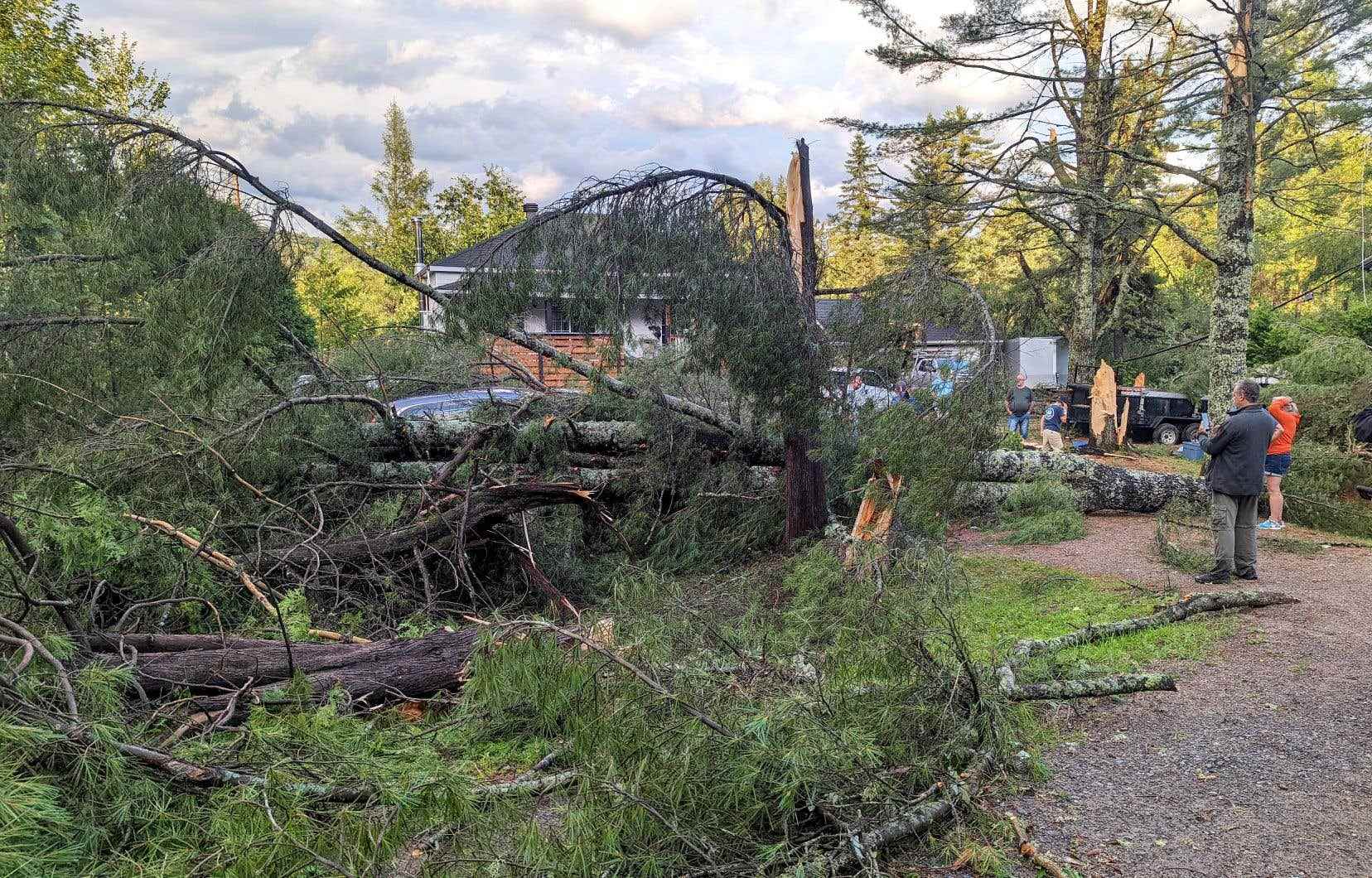A tornado touched down on Saturday in the Laurentians. Winds of 200 km/h destroyed several buildings and deprived hundreds of customers of electricity. These violent storms are expected to multiply in the coming years throughout Quebec.
Tornado chasers from the “Xtrem Chase Quebec” team scoured Quebec on Saturday looking for tornadoes and reported their sightings to the government. “Around 6:10 p.m. [samedi], a tornado hit the municipality of Saint-Adolphe-d’Howard in the Laurentians. The destructive winds severely damaged homes and broke or uprooted many trees over a distance of 3 to 4 kilometers and a width of about 300 meters,” Environment Canada concluded on Sunday.
One of the followers of this extreme weather, Pierre-Marc Doucet, expects this type of swirling weekend to happen again more and more often with global warming.
“The proven trend so far with climate change is that it blocks the bosses [patterns] weather report. If we’re stuck in a pattern with more pressure, we could have more severe thunderstorms, more tornadoes. The reverse is also true. If we are stuck in a system of good weather, of high pressure, it will lead to other problems such as drought and forest fires,” he explains.
Tornadoes in Quebec will become “more abundant and more intense”, confirms the professor of atmospheric science at UQAM Jean-Pierre Blanchet.
“A whole range” of severe weather events will in fact hit Quebec, such as hail, gales and near-tropical rains. Not to mention winter storms.
Conversely, tornadoes are likely to disappear from already warm regions, such as deserts, where the cold air at high altitudes becomes scarce.
Because “the temperature difference” between the ground and the atmosphere creates this movement of “convection” specific to tornadoes and other storms. “We have warmed up the climate, the ground is getting warmer than before, so we tend to increase severe events,” explains Mr. Blanchet.
Montreal spared
Climate change is moving the famous tornado alley from the central United States eastward until it spills over into Ontario and Quebec.
For recent evidence, hail “from the Outaouais to the North Shore” was listed Sunday by Environment Canada. Violent winds fell “as far as the Gaspé last week,” notes Mr. Blanchet. “It’s escalating among the Americans and it’s moving north. And it’s getting more frequent. »
On the other hand, Montreal should be spared from destructive storms. Tornado hunter Mathieu Lussier himself saw this exception. “As soon as it leaves the mountains, as soon as it leaves the Laurentians, it comes undone. As hunters, we are disappointed when that happens. But we see that when [la cellule orageuse] is made in the Richelieu valley, it happens again. »
The St. Lawrence River, the Richelieu and the Ottawa River “form flow channels not only for water, but also for air”, explains Jean-Pierre Blanchet. “The air tends to come out of the Montreal area,” which inhibits the unleashing of the elements.
To protect yourself
The number of deaths from tornadoes has greatly decreased in America in recent years thanks to warnings that prevent unpleasant surprises.
“To protect yourself, you have to be inside a solid building. Going underground, underground, is the best thing, advises Pierre Marc Doucet. […] Otherwise go to the center of the house, or in a very solid room, in the bathroom, or even in the bathtub. »
If you are outside, you should avoid staying near other structures or trees, and rather take refuge in a ditch or hollow. “Otherwise, lie flat on the ground, to avoid debris,” he adds.
The Ontario-based Northern Tornado Project has been monitoring tornadoes since 2017. The accepted average of 6 tornadoes per year on Quebec soil is thus in the process of being revised. For the past five years, the average annual tornado in Quebec has been around 17.
